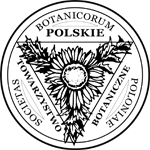EDTA reduces cadmium toxicity in mustard (Brassica juncea L.) by enhancing metal chelation, antioxidant defense and glyoxalase systems
Abstract
Keywords
Full Text:
PDFReferences
Campbell PGC. Cadmium – a priority pollutant. Environ Chem. 2006;3:387–388. https://doi.org/10.1071/EN06075
Popova LP, Maslenkova LT, Yordanova RY, Ivanova AP, Krantev AP, Szalai G, et al. Exogenous treatment with salicylic acid attenuates cadmium toxicity in pea seedlings. Plant Physiol Biochem. 2009;47:224–231. https://doi.org/10.1016/j.plaphy.2008.11.007
Hasanuzzaman M, Fujita M. Heavy metals in the environment: current status, toxic effects on plants and possible phytoremediation. In: Anjum NA, Pereira MA, Ahmad I, Duarte AC, Umar S, Khan NA, editors. Phytotechnologies: remediation of environmental contaminants. Boca Raton, FL: CRC Press; 2012. p. 7–73. https://doi.org/10.1201/b12954-4
Benavides MP, Gallego SM, Tomaro ML. Cadmium toxicity in plants. Braz J Plant Physiol. 2005;17:21–34. https://doi.org/10.1590/S1677-04202005000100003
Gill SS, Tuteja N. Cadmium stress tolerance in crop plants: probing the role of sulfur. Plant Signal Behav. 2011;6:215–222. https://doi.org/10.4161/psb.6.2.14880
Hasanuzzaman M, Hossain MA, Teixeira da Silva JA, Fujita M. Plant responses and tolerance to abiotic oxidative stress: antioxidant defense is a key factor. In: Bandi V, Shanker, AK, Shanker C, Mandapaka M, editors. Crop stress and its management: perspectives and strategies. Berlin: Springer; 2012. p. 261–316. https://doi.org/10.1007/978-94-007-2220-0_8
Sigfridsson KGV, Bernát G, Mamedov F, Styring S. Molecular interference of Cd2+ with photosystem II. Biochim Biophys Acta. 2004;1659:19–31. https://doi.org/10.1016/j.bbabio.2004.07.003
Hall JL. Cellular mechanisms for heavy metal detoxification and tolerance. J Exp Bot. 2002;53:1–11. https://doi.org/10.1093/jexbot/53.366.1
Gratão PL, Polle A, Lea PJ, Azevedo RA. Making the life of heavy metal stressed plants a little easier. Funct Plant Biol. 2005;32:481–494. https://doi.org/10.1071/FP05016
Gill SS, Tuteja N. Reactive oxygen species and antioxidant machinery in abiotic stress tolerance in crop plants. Plant Physiol Biochem. 2010;48:909–930. https://doi.org/10.1016/j.plaphy.2010.08.016
Yadav SK, Singla-Pareek SL, Sopory SK. An overview on the role of methylglyoxal and glyoxalases in plants. Drug Metabol Drug Interact. 2008;23:51–68. https://doi.org/10.1515/DMDI.2008.23.1-2.51
Hasanuzzaman M, Nahar K, Hossain MS, Mahmud JA, Rahman A, Inafuku M, et al. Coordinated actions of glyoxalase and antioxidant defense systems in conferring abiotic stress tolerance in plants. Int J Mol Sci. 2017;18:200. https://doi.org/10.3390/ijms18010200
Salt DE, Smith RD, Raskin I. Phytoremediation. Annu Rev Plant Physiol Plant Mol Biol. 1998;49:643–668. https://doi.org/10.1146/annurev.arplant.49.1.643
Hernández-Allica J, Garbisu C, Barrutia O, Becerril JM. EDTA-induced heavy metal accumulation and phytotoxicity in cardoon plants. Environ Exp Bot. 2007;60:26–32. https://doi.org/10.1016/j.envexpbot.2006.06.006
Chigbo C, Batty L. Effect of EDTA and citric acid on phytoremediation of Cr-B[a]P-co-contaminated soil. Environ Sci Pollut Res Int. 2013;20:8955–8963. https://doi.org/10.1007/s11356-013-1883-7
Farid M, Ali S, Ishaque W, Shakoor MB, Niazi NK, Bibi I, et al. Exogenous application of ethylenediamminetetraacetic acid enhanced phytoremediation of cadmium by Brassica napus L. International Journal of Environmental Science and Technology. 2015;12:3981–3992. https://doi.org/10.1007/s13762-015-0831-0
Evangelou MWH, Bauer U, Ebel M, Schaeffer A. The influence of EDDS and EDTA on the uptake of heavy metals of Cd and Cu from soil with tobacco (Nicotiana tabacum). Chemosphere. 2007;68:345–353. https://doi.org/10.1016/j.chemosphere.2006.12.058
Agbadah EE, Nwachukwu KC, Okoh MP. Biochemical effects of ethylene diamine tetra-acetic acid (EDTA) on cadmium treated maize (Zea mays L.) and cowpea (Vigna unguiculata L.). Afr J Biotechnol. 2016;15:593–600. https://doi.org/10.5897/AJB2015.14841
Xu W, Li Y, He J, Ma O, Zhang X, Chen G, et al. Cd uptake in rice cultivars treated with organic acids and EDTA. Journal of Environmental Sciences. 2010;22:441–447. https://doi.org/10.1016/S1001-0742(09)60127-3
Greger M, Lindberg S. Effects of Cd2+ and EDTA on young sugar beets (Beta vulgaris). I. Cd2+ uptake and sugar accumulation. Physiol Plant. 1986;66:69–74. https://doi.org/10.1111/j.1399-3054.1986.tb01235.x
Hardiman RT, Jacoby B. Absorption and translocation of Cd in bush beans (Phaseolus vulgaris). Physiol Plant. 1984;61:670–674. https://doi.org/10.1111/j.1399-3054.1984.tb05189.x
Xu W, Li W, He J, Singh B, Xiong Z. Effects of insoluble Zn, Cd, and EDTA on the growth, activities of antioxidant enzymes and uptake of Zn and Cd in Vetiveria zizanioides. Journal of Environmental Sciences. 2009;21:186–192. https://doi.org/10.1016/S1001-0742(08)62249-4
Heath RL, Packer L. Photoperoxidation in isolated chloroplast: I. Kinetics and stoichiometry of fatty acid per oxidation. Arch Biochem Biophys. 1968;125:189–198. https://doi.org/10.1016/0003-9861(68)90654-1
Hasanuzzaman M, Hossain MA, Fujita M. Exogenous selenium pretreatment protects rapeseed from cadmium-induced oxidative stress by upregulating antioxidant defense and methylglyoxal detoxification systems. Biol Trace Elem Res. 2012;149:248–261. https://doi.org/10.1007/s12011-012-9419-4
Yu CW, Murphy TM, Lin CH. Hydrogen peroxide-induces chilling tolerance in mung beans mediated through ABA-independent glutathione accumulation. Funct Plant Biol. 2003;30:955–963. https://doi.org/10.1071/fp03091
Nahar K, Hasanuzzaman M, Alam MM, Rahman A, Suzuki T, Fujita M. Polyamine and nitric oxide crosstalk: antagonistic effects on cadmium toxicity in mung bean plants through upregulating the metal detoxification, antioxidant defense, and methylglyoxal detoxification systems. Ecotoxicol Environ Saf. 2016;126:245–255. https://doi.org/10.1016/j.ecoenv.2015.12.026
Arnon DT. Copper enzymes in isolated chloroplasts. Polyphenol oxidase in Beta vulgaris. Plant Physiol. 1949;24:1–15. https://doi.org/10.1104/pp.24.1.1
Bates LS, Waldren RP, Teari D. Rapid determination of free proline for water stress studies. Plant Soil. 1973;39:205–207. https://doi.org/10.1007/BF00018060
Wild R, Ooi L, Srikanth V, Münch G. A quick, convenient and economical method for the reliable determination of methylglyoxal in millimolar concentrations: the N-acetyl-l-cysteine assay. Anal Bioanal Chem. 2012;403:2577–2581. https://doi.org/10.1007/s00216-012-6086-4
Huang C, He W, Guo J, Chang X, Su P, Zhang L. Increased sensitivity to salt stress in ascorbate deficient Arabidopsis mutant. J Exp Bot. 2005;56:3041–3049. https://doi.org/10.1093/jxb/eri301
Bradford M. A rapid and sensitive method for the quantitation of microgram quantities of protein utilizing the principle of protein-dye binding. Anal Biochem. 1976;72:248–254. https://doi.org/10.1016/0003-2697(76)90527-3
Doderer A, Kokkelink I, van der Veen S, Valk B, Schram A, Douma A. Purification and characterization of two lipoxygenase isoenzymes from germinating barley. Biochim Biophys Acta. 1992;112:97–104. https://doi.org/10.1016/0167-4838(92)90429-H
El-Shabrawi H, Kumar B, Kaul T, Reddy MK, Singla-Pareek SL, Sopory SK. Redox homeostasis, antioxidant defense, and methylglyoxal detoxification as markers for salt tolerance in Pokkali rice. Protoplasma. 2010;245:85–96. https://doi.org/10.1007/s00709-010-0144-6
Nakano Y, Asada K. Hydrogen peroxide is scavenged by ascorbate-specific peroxidase in spinach chloroplasts. Plant Cell Physiol. 1981;22:867–880. https://doi.org/10.1093/oxfordjournals.pcp.a076232
Hossain MA, Nakano Y, Asada K. Monodehydroascorbate reductase in spinach chloroplasts and its participation in the regeneration of ascorbate for scavenging hydrogen peroxide. Plant Cell Physiol. 1984;25:385–395. https://doi.org/10.1093/oxfordjournals.pcp.a076726
Elia AC, Galarini R, Taticchi MI, Dorr AJM, Mantilacci L. Antioxidant responses and bioaccumulation in Ictalurus melas under mercury exposure. Ecotoxicol Environ Saf. 2003;55:162–167. https://doi.org/10.1016/S0147-6513(02)00123-9
Principato GB, Rosi G, Talesa V, Govannini E, Uolila L. Purification and characterization of two forms of glyoxalase II from rat liver and brain of Wistar rats. Biochim Biophys Acta. 1987;911:349–355. https://doi.org/10.1016/0167-4838(87)90076-8
Ellman G. Tissue sulfhydryl groups. Arch Biochem Biophys. 1959;32:70–77. https://doi.org/10.1016/0003-9861(59)90090-6
Addinsoft. XLSTAT v. 2017: data analysis and statistics software for Microsoft Excel [Software]. Paris: Addinsoft; 2017.
Szollosi R, Varga IS, Erdei L, Mihalik E. Cadmium-induced oxidative stress and antioxidative mechanisms in germinating Indian mustard (Brassica juncea L.) seeds. Ecotoxicol Environ Saf. 2009;72:1337–1342. https://doi.org/10.1016/j.ecoenv.2009.04.005
Zheng G, Lv HP, Gao S, Wang SR. Effects of cadmium on growth and antioxidant responses in Glycyrrhiza uralensis seedlings. Plant Soil Environ. 2010;56:508–515. https://doi.org/10.17221/30/2010-PSE
Uruç K, Yilmaz DD. Effect of cadmium, lead and nickel on imbibition, water uptake and germination for the seeds of different plants. Dumlupınar Üniversitesi Fen Bilimleri Enstitüsü. 2008;17:1–10.
Najmanova J, Neumannova E, Leonhardt T, Zitka O, Kizek R, Macek T, et al. Cadmium-induced production of phytochelatins and speciation of intracellular cadmium in organs of Linum usitatissimum seedlings. Ind Crop Prod. 2012;36:536–542. https://doi.org/10.1016/j.indcrop.2011.11.008
Clemens S. Toxic metal accumulation, responses to exposure and mechanisms of tolerance in plants. Biochimie. 2006;88:1707–1719. https://doi.org/10.1016/j.biochi.2006.07.003
Niakan M, Kaghazloo F. Effect of ethylene diamine tetra acetic acid chelator in the presence of chromium on growth and some physiological characteristics of sunflower. Iranian Journal of Plant Physiology. 2016;6:1659–1665.
Miller G, Shulaev V, Mitter R. Reactive oxygen signaling and abiotic stress. Physiol Plant. 2008;133:481–489. https://doi.org/10.1111/j.1399-3054.2008.01090.x
Custos J, Moyne C, Treillon T, Sterckeman T. Contribution of Cd-EDTA complexes to cadmium uptake by maize: a modelling approach. Plant Soil. 2014;374:497–512. https://doi.org/10.1007/s11104-013-1906-7
Jiang XJ, Luo YM, Zhao QG, Baker AJM, Christie P, Wong MH. Soil Cd availability to Indian mustard and environmental risk following EDTA addition to Cd contaminated soil. Chemosphere. 2003;50:813–818. https://doi.org/10.1016/S0045-6535(02)00224-2
Vatamaniuk OK, Mari S, Lu Y, Rea PA. Mechanism of heavy metal ion activation of phytochelatin (PC) synthase. J Biol Chem. 2000;275:31451–31459. https://doi.org/10.1074/jbc.M002997200
Zagorchev L, Seal CE, Kranner I, Odjakova M. A central role for thiols in plant tolerance to abiotic stress. Int J Mol Sci. 2013;14:7405–7432. https://doi.org/10.3390/ijms14047405
DOI: https://doi.org/10.5586/aa.1772
|
|
|






